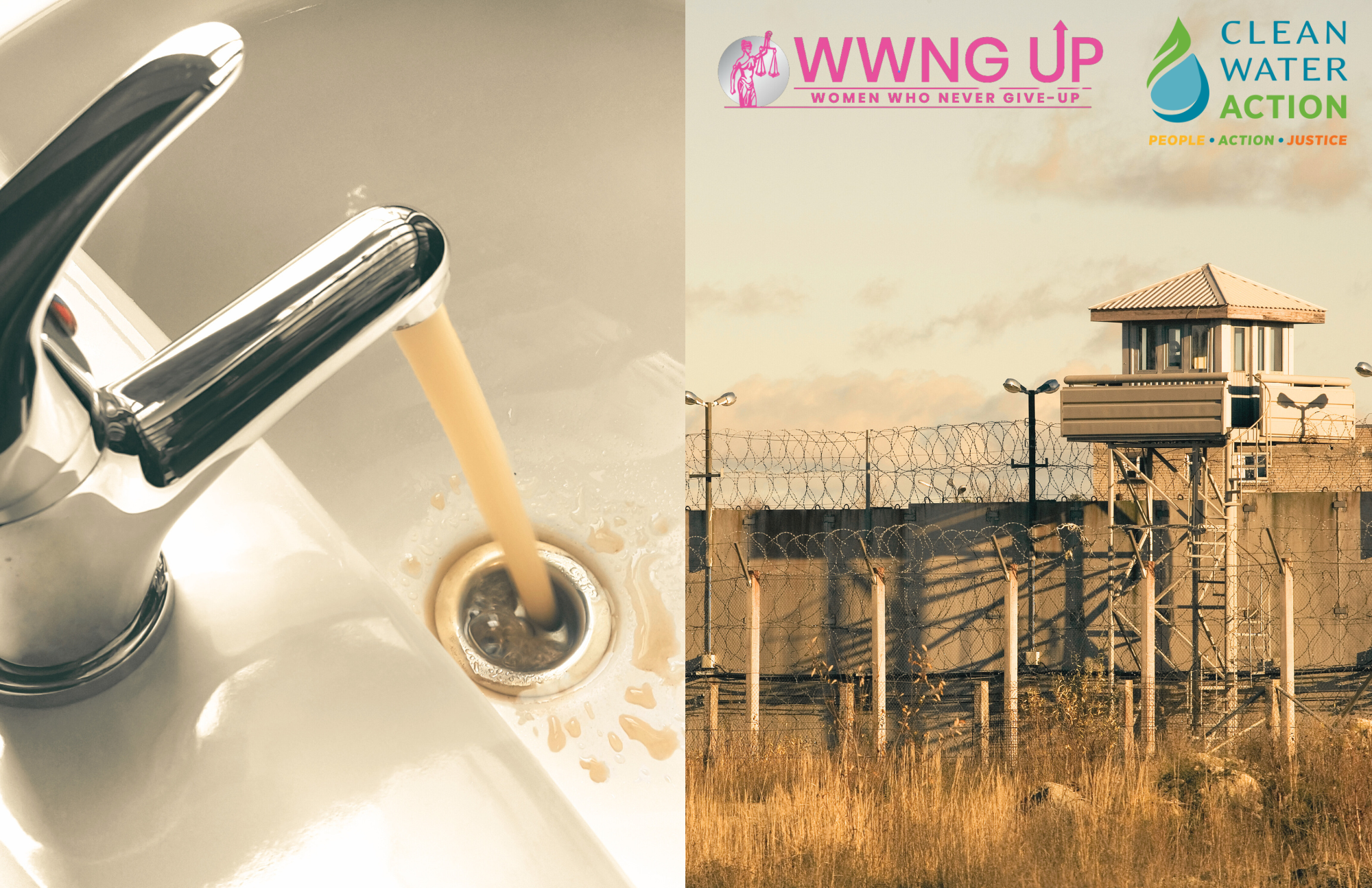
As New Jersey grapples with the impacts of climate change and environmental contamination, the state's incarcerated population faces heightened health risks. Sydnie Bogan’s research at Kean University's Department of Environmental and Sustainability Sciences highlights these challenges, showing how contamination and climate-related issues exacerbate vulnerabilities in our correctional facilities. Learn more about how these issues impact the health and safety of incarcerated individuals and what we’re doing to address them.
Join the Movement!
Support our petition to demand immediate action from state authorities to improve water quality and living conditions in New Jersey's prisons. We are also accepting public comments on NJ's Declaration of Environmental Rights for Incarcerated People.
Learn more
Explore the full details of Sydnie Bogan’s research and its implications for New Jersey's incarcerated individuals. Discover how environmental contamination and climate change contribute to significant health risks. Find out what steps we are taking to mitigate these challenges.
Additional Background
New Jersey’s incarcerated individuals are enduring appalling conditions that threaten their health and safety. Correctional facilities are situated near toxic industrial sites, potentially exposing thousands of people to dangerous contaminants. Detecting E. coli in their drinking water raises concerns about the adequacy of their sewer systems. These injustices go largely unnoticed, but the impact is undeniable:
- In 2023, New Jersey’s incarcerated population consisted of 13,196 individuals, likely hailing from pollution-burdened communities with pre-existing health conditions.
- These individuals are forced to drink and bathe in water potentially contaminated by carcinogens or other harmful toxins.
- Wildfire smoke choked those incarcerated at Garden State Youth Correctional Facility in 2023, with no escape from the hazardous air. Due to the cumulative impacts of climate change such as the 2023 wildfire smoke and prison infrastructure issues many health conditions like asthma and COPD are on the rise.
- Most facilities are limited to allowing those incarcerated to purchase 48 bottles of water per month, that's approximately 1.6 bottles per day when health advice is recommended a minimum of 6-8 glasses per day.
- Extreme heat waves have driven cell temperatures up to 94°F, leaving those with heart disease and respiratory conditions even more vulnerable. With the increase in temperatures and lack of accessible water, those incarcerated can face serious heat stress and dehydration symptoms, which can lead to physical, psychological, mood/emotional and cognitive impairment exacerbated by a confined and high-stressed environment.
These conditions violate basic human rights. Everyone deserves clean water and safe living conditions—no exceptions.
Safe Water, Safe Lives Virtual Information Session
References
Rosenblum, J. S., Liethen, A., & Miller-Robbie, L. (2024, April 23). Prioritization and risk ranking of regulated and unregulated chemicals in US drinking water. Environmental science & technology. www.ncbi.nlm.nih.gov/pmc/articles/PMC11044589/
Zbarby. (n.d.). Health officials investigate seven additional cases of legionnaires’ disease reported in Mercer County, urge precautions to reduce risk of legionella growth. www.nj.gov/health/news/2023/approved/20230327b.shtml
Hazardous substance fact sheet - nj.gov. (n.d.). www.nj.gov/health/eoh/rtkweb/documents/fs/1902.pdf
Ethylene dibromide (dibromoethane). (n.d.-a). www.epa.gov/sites/default/files/2016-09/documents/ethylene-dibromide.pdf
Pellow, David. (2017, October 27). Environmental inequalities and the U.S. prison system: An urgent research agenda. International Journal of Earth & Environmental Sciences. www.doi.org/10.15344/2456-351X/2017/140
Volatile organic compounds in your home. Volatile Organic Compounds in Your Home - MN Dept. of Health. (n.d.). www.health.state.mn.us/communities/environment/air/toxins/voc.htm
Suarez v. A1, Civil Action No. 06-2782 (JBS) | casetext search + citator. (n.d.-c). www.casetext.com/case/suarez-v-a1
Albert C. Wagner Water Quality Documents
Mercer County Correctional Center Documents
Skarha, J., et al. "An Overlooked Crisis: Extreme Temperature Exposures in Incarceration Settings." American Journal of Public Health, vol. 110, no. 1, Jan. 2020
Wang, Leah. "Heat, Floods, Pests, Disease, and Death: What Climate Change Means for People in Prison." Prison Policy Initiative, 19 July 2023
Pellow, D.N., et al.,, UC Santa Barbara, & Global Environmental Justice Project. "Environmental Justice Struggles in Prisons and Jails around the World." The 2020 Annual Report of the Prison Environmental Justice Project
“Climate Change in New Jersey: A Brief Introduction." New Jersey Climate Change Resource Center, n.d.
Cowan, K.N., Peterson, M., LeMasters, K., Brinkley-Rubinstein, L. "Overlapping Crises: Climate Disaster Susceptibility and Incarceration." International Journal of Environmental Research and Public Health, vol. 19, no. 12, 17 June 2022
Wu, Paloma, and D. Korbin Felder."Hell and High Water: How Climate Change Can Harm Prison Residents and Why COVID-19 Conditions ..." Fordham Urban Law Journal, vol. 49, 2022, pp. 259-300